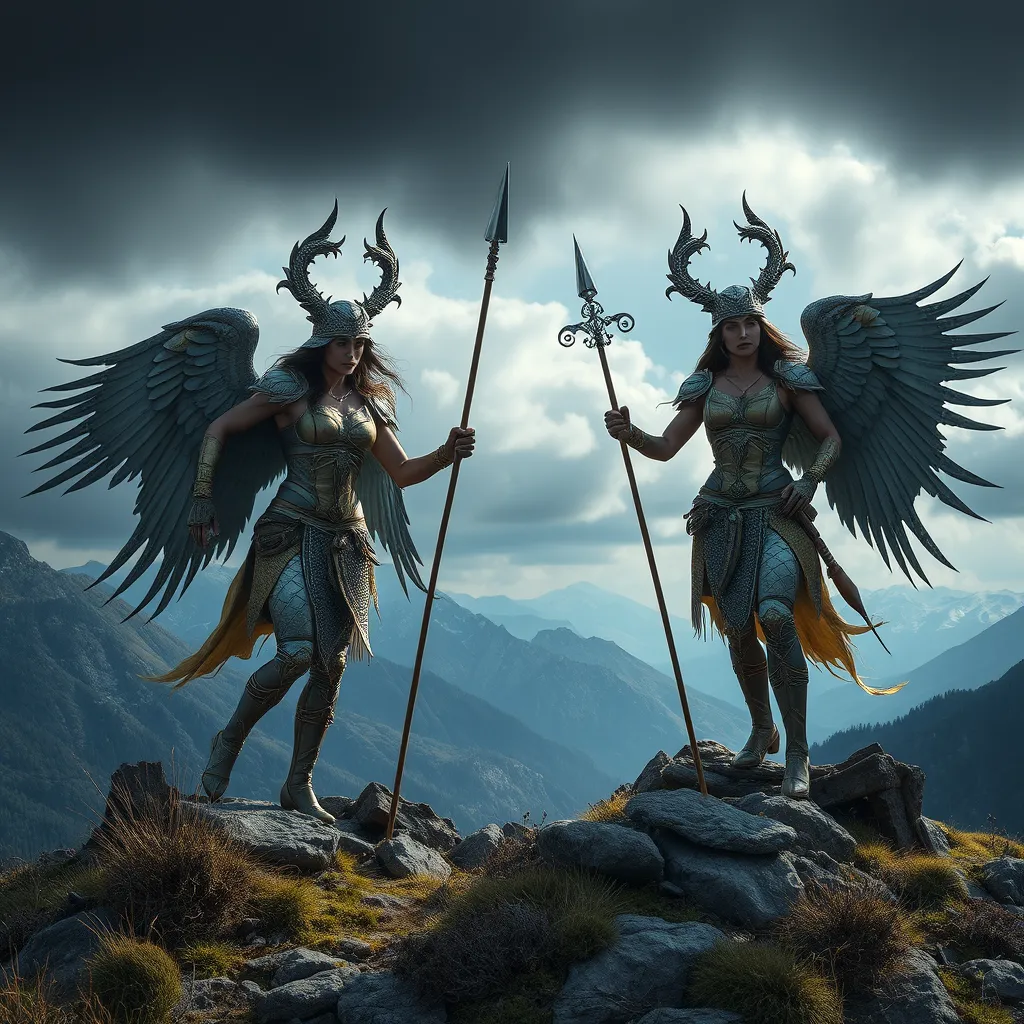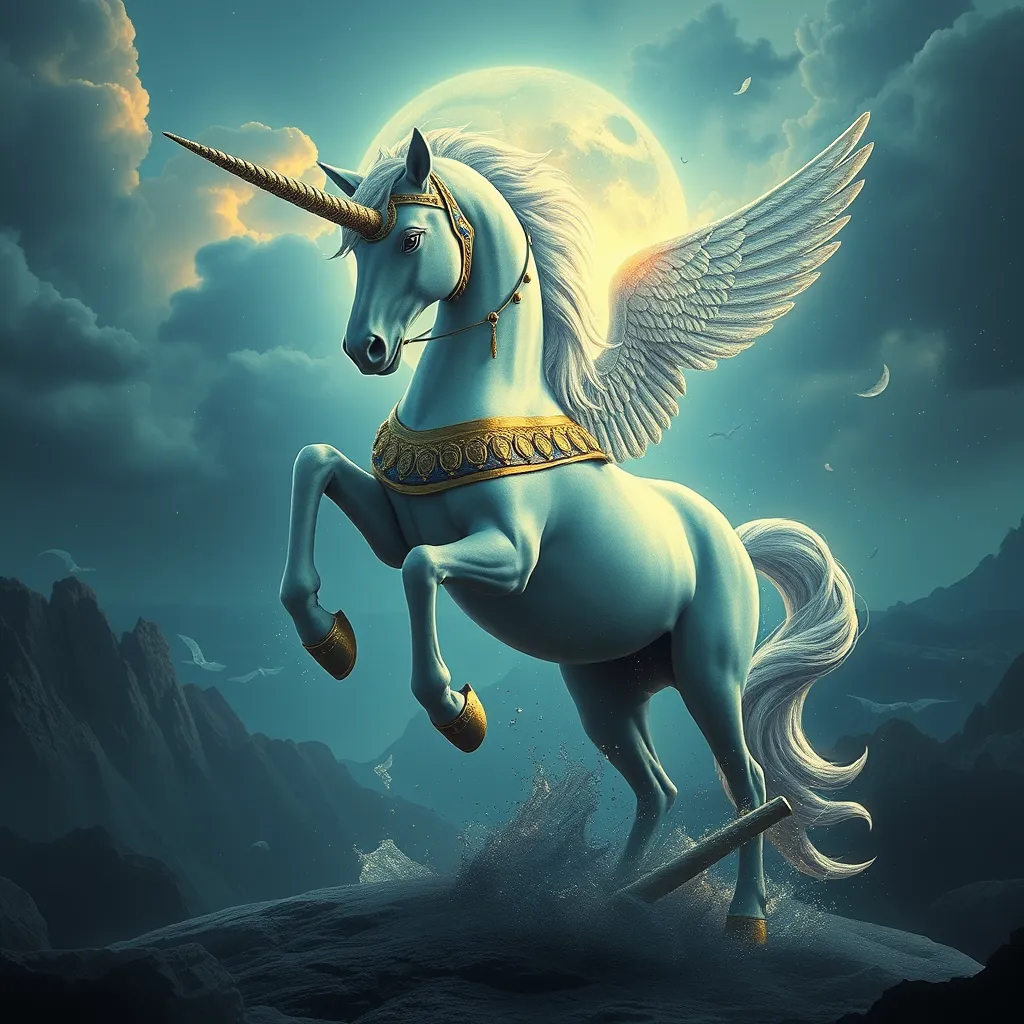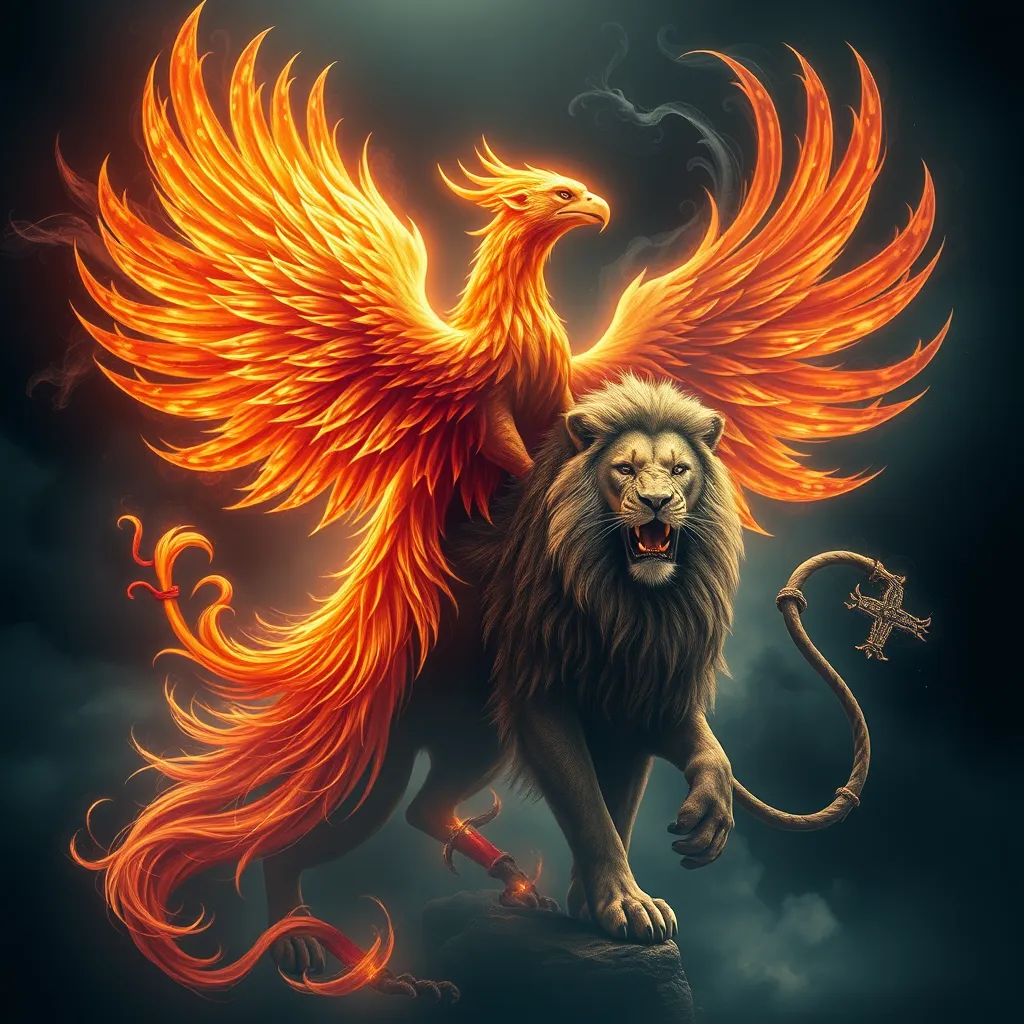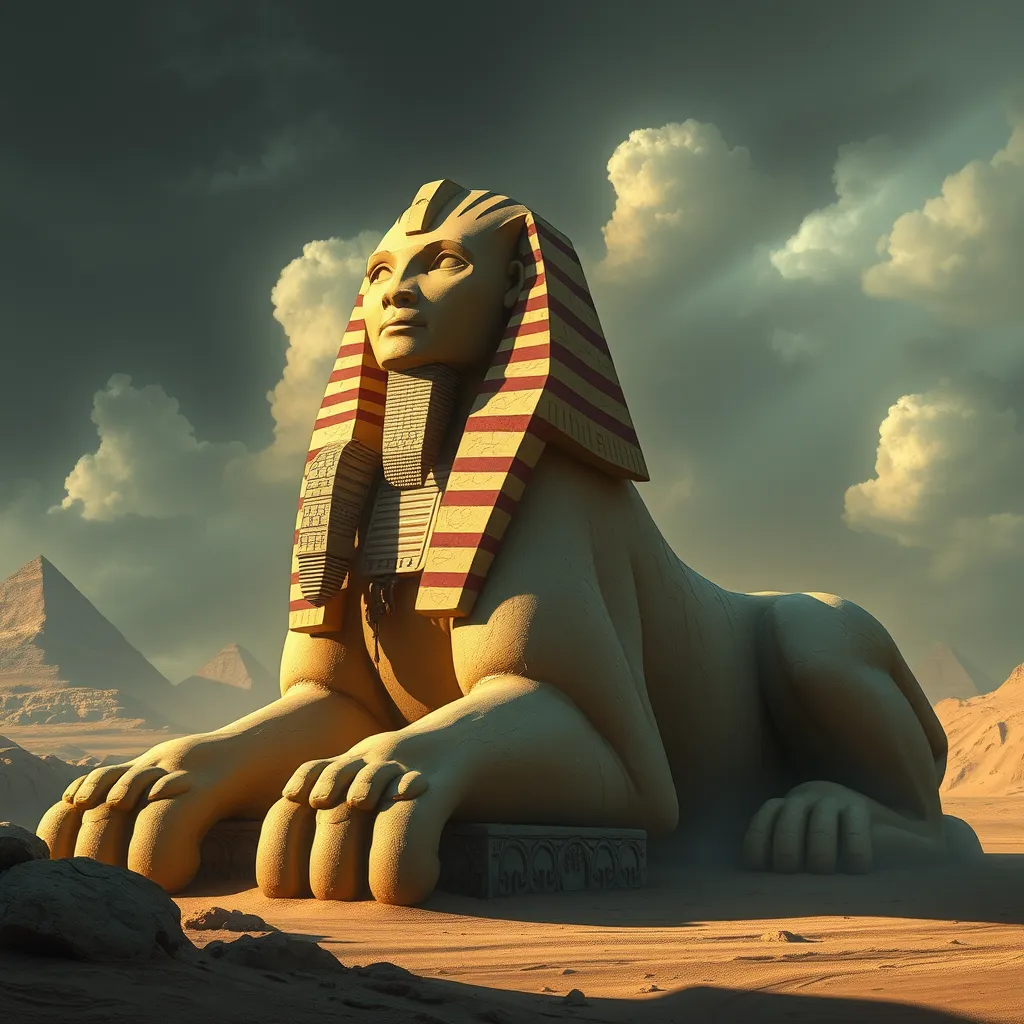The Valkyries of the Caucasus: A Look at the Mythological Warriors of the Caucasus Mountains
I. Introduction
The Caucasus Mountains, a majestic range straddling Europe and Asia, are not only renowned for their breathtaking landscapes but also for their rich cultural tapestry. This region has served as a crossroads for various civilizations, each leaving its mark on the folklore and mythology of the area. Among the many mythological figures that emerge from these mountains are the Valkyries—fierce warrior women whose legends intertwine with the history and culture of the Caucasus.
This article aims to explore the concept of Valkyries, particularly in the context of the Caucasus. We will delve into their historical roots, their roles in warfare and society, and how they compare to similar figures in other cultures. By examining these aspects, we hope to illuminate the significance of Valkyries in the mythological framework of the Caucasus Mountains.
II. Historical Context of the Caucasus Mountains
A. Geographical overview of the region
The Caucasus Mountains are located between the Black Sea and the Caspian Sea, forming a natural barrier between Eastern Europe and Western Asia. This diverse region encompasses several countries, including Russia, Georgia, Armenia, and Azerbaijan, and is characterized by its rugged terrain, rich biodiversity, and varied climate.
B. Historical tribes and cultures of the Caucasus
The Caucasus has been home to numerous tribes and cultures throughout history, including the Circassians, Chechens, Ossetians, and Georgians. Each of these groups has contributed to the region’s complex cultural identity, often blending ancient traditions with more contemporary influences.
C. The role of mythology in shaping cultural identity
Mythology plays a pivotal role in the cultural identity of the peoples of the Caucasus. It serves not only as a means of explaining the natural world but also as a way to unify communities through shared stories and legends. The tales of Valkyries, in particular, reflect the values, struggles, and aspirations of these societies.
III. The Concept of Valkyries in Mythology
A. Definition and characteristics of Valkyries
Valkyries are traditionally depicted as warrior maidens who choose those who may die and those who may live in battles. They serve Odin, the chief god in Norse mythology, guiding slain warriors to Valhalla, where they prepare for Ragnarök, the end of the world. Valkyries are often portrayed as strong, independent figures embodying bravery and honor.
B. Comparison with similar warrior figures in other cultures
Various cultures possess similar figures to the Valkyries. For instance:
- Amazons: In Greek mythology, the Amazons were a tribe of warrior women known for their fierce combat skills.
- Shamans: In Siberian and other indigenous traditions, female shamans often play roles similar to Valkyries, guiding spirits and warriors.
- Matronae: In Roman culture, the Matronae were protective spirits of families, akin to the protective nature of Valkyries.
C. Symbolism and significance of Valkyries in mythology
Valkyries symbolize strength, choice, and the interplay between life and death. They represent the honor of dying in battle, a core value in many warrior cultures. Their narratives often explore themes of fate and destiny, reflecting the beliefs of the societies that tell their stories.
IV. The Valkyries of the Caucasus: Origins and Legends
A. Folkloric tales and oral traditions
In the Caucasus, the legends of Valkyries are often passed down through oral traditions, featuring heroic women who protect their people in times of war. These tales often emphasize the bravery and cunning of female figures who defy conventional gender roles.
B. Key figures and stories associated with Valkyries in the region
Many stories feature notable Valkyrie-like figures, such as:
- Nana: A goddess of war and fertility in Georgian mythology, often portrayed as a fierce protector of her people.
- Alu: In Chechen folklore, Alu is a legendary female warrior known for her strength and leadership in battle.
C. The blending of pagan and Christian elements in the narratives
The narratives of Valkyries in the Caucasus often showcase a unique blend of pagan and Christian elements. As Christianity spread through the region, many pre-Christian beliefs were integrated into new religious frameworks, resulting in hybrid myths that reflect both ancient traditions and modern beliefs.
V. The Role of Valkyries in Warfare and Society
A. Valkyries as protectors of warriors and the battlefield
Valkyries in Caucasian mythology are often seen as guardians of warriors, guiding them in battle and ensuring their valor is remembered. They embody the spirit of the fight, providing strength to those who face peril.
B. The societal implications of female warriors in Caucasian cultures
The presence of warrior women in Caucasian myths challenges traditional gender roles. Their acceptance in battle signifies a society that values strength and courage, regardless of gender. This reflects a cultural recognition of women’s contributions to societal defense and honor.
C. Rituals and practices associated with Valkyries during conflicts
During conflicts, various rituals may be performed to invoke the blessings of Valkyries. These can include:
- Offering sacrifices to spirits of female warriors.
- Creating songs and chants that honor the bravery of women in battle.
- Practicing dances that emulate the movements of Valkyries in combat.
VI. Comparative Analysis: Caucasian Valkyries vs. Norse Valkyries
A. Similarities in traits and functions
Both Caucasian and Norse Valkyries share similar traits such as strength, independence, and a protective role over warriors. They serve as a bridge between the mortal realm and the divine, guiding souls in the afterlife.
B. Differences in cultural representation and narrative
While Norse Valkyries are often linked to a singular god, Odin, Caucasian Valkyries are tied to a broader pantheon of deities, reflecting the region’s polytheistic traditions. The narratives surrounding them also tend to include more communal aspects, focusing on family and tribe rather than individual glory.
C. Influence of geography and climate on the myths
The harsh and varied climates of the Caucasus have shaped the stories of Valkyries, portraying them as resilient figures who thrive in adversity. In contrast, Norse myths often reflect the cold and isolation of their environment, producing different themes of survival and conquest.
VII. Modern Interpretations and Representations
A. The resurgence of interest in Valkyries in contemporary culture
In recent years, there has been a growing interest in Valkyries, both in the Caucasus and globally. This resurgence is evident in literature, art, and media, often highlighting themes of feminism and empowerment.
B. Artistic representations in literature, film, and visual arts
Valkyries have been depicted in various forms of art, from classical paintings to modern films. Their portrayal often emphasizes their strength and independence, challenging traditional narratives surrounding female figures.
C. The importance of preserving and promoting these myths today
Preserving the myths of Valkyries is vital for cultural heritage. These stories not only reflect historical values but also provide insight into contemporary discussions about gender roles and societal expectations. By promoting these myths, we encourage a deeper understanding of the past and its relevance to modern society.
VIII. Conclusion
A. Summary of key points discussed
This exploration of the Valkyries of the Caucasus highlights their significance as mythological figures that embody strength, bravery, and the complex interplay of gender roles in warfare. From their origins in folklore to their modern interpretations, Valkyries continue to resonate with audiences.
B. The enduring legacy of Valkyries in the Caucasus
The legacy of Valkyries in the Caucasus endures as a testament to the region’s rich cultural heritage. Their stories inspire generations, fostering a sense of pride in the bravery of those who came before.
C. Final thoughts on the significance of mythological figures in cultural heritage
Mythological figures like the Valkyries serve as important cultural symbols, reflecting the values, struggles, and aspirations of societies. By understanding and preserving these myths, we honor the stories that shape our identities and continue to influence our world today.



